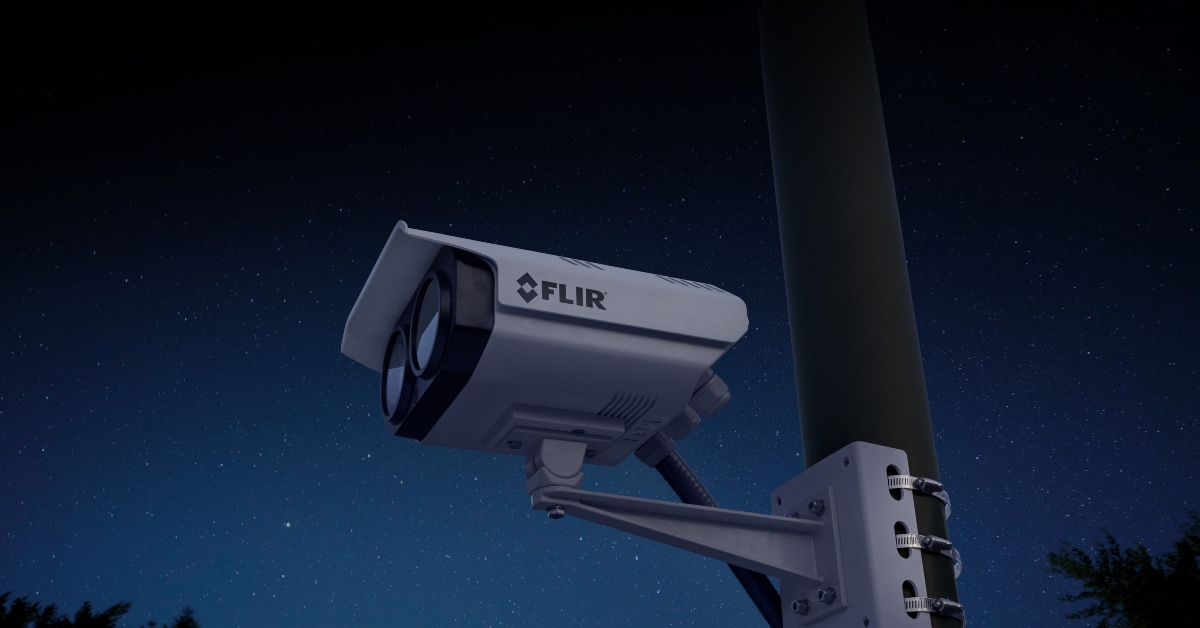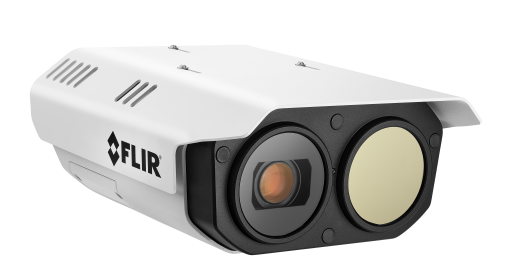Retrofit Your Security Surveillance with FLIRs NDAA Compliant Cameras

With the government announcing additional controls on CCTV in the UK, many public institutions and businesses are now required to replace their visual surveillance systems.
If you are looking for a security system that has longevity, prioritises data protection and is NDAA Compliant then Teledyne FLIR can help. To help you chose the right security solution for you we've supplied the defining characteristics and benefits of the different types of cameras on the market today.
Multispectral Fixed Camera for Perimeter Protection are ruggedized, multispectral fixed cameras that integrate industry-leading thermal imaging with 4K visible imaging to provide reliable intruder-detection capabilities for perimeter security. Built-in convolutional neural network (CNN) analytics accurately detect and classify human and vehicle threats moving at high or low speeds, minimizing false alarms and daily operations costs. Custom scheduling enables security operators to set intrusion analytics to run on visible streams during the day and on thermal streams throughout the night, establishing optimized coverage for any lighting condition.

FH SERIES ID
Bullet Cameras earn their name from a distinct, cylindrical shape reminiscent of shell casings. These fixed cameras have longer and wider ranges optimal for exterior monitoring. Often installed outdoors along a perimeter, these cameras are frequently combined with video analytics solutions for intrusion detection. Bullet cameras normally include a sun shield that extends beyond the lens to protect against sun glare and harsh weather. Bullet cameras are also easily visible and act as visual deterrents to dissuade suspects from committing crimes. They can also be easily repositioned by adjusting the mounting bracket or lens.
QUASAR™ PREMIUM BULLET
Pan-Tilt-Zoom cameras have a motorized platform that can move directionally or omnidirectionally and be controlled remotely or by pre-set tours. Often larger in size and featuring high resolutions, these cameras can pan left or right, tilt up or down, and zoom in or out. PTZ cameras are often mounted outdoors on exterior walls or poles with a wide field of view so they can surveil the entire site. They receive targets, handed off from fixed cameras on the perimeter, and follow the target for threat assessment and suspect identification.
Quasar™ 4K IR PTZ Cameras
Dome cameras are known for their discrete design that blends into their surroundings. They often feature a metal base and polycarbonate plastic covering the camera to safeguard it from vandalism or tampering. They are typically mounted on ceilings in indoor spaces such as office lobbies or retail store aisles and yield wide-area monitoring. Dome cameras can use a smoked or tinted hue in the dome material to obscure the internal lens and make it indiscernible where the lens is pointing for maximum discretion.
Quasar™ Premium Mini-Dome
Questions to Consider
To select the best camera for your application, there are several things to consider:
- What do I want to achieve? If it’s intrusion detection, consider a bullet camera. Area surveillance can be achieved by dome cameras. Target tracking is best for PTZ cameras. If aesthetics are important, dome cameras may be preferred.
- Which areas need surveillance coverage? Bullet cameras are suited for perimeters and fence lines. Dome cameras are sufficient for outdoor courtyards, entrance gates and large indoor spaces. PTZ cameras are optimal for outdoor corridors, hallways, and large sites requiring 180- or 360 scans of the entire area.
- What range do I need to achieve for recognition and detection? Remember, bullet and PTZ cameras have longer ranges than dome cameras. They will be able to classify targets at further distances.
Working Together
While all of these cameras have distinct functionalities for specific environments, there are scenarios when all three are applicable. In mid-size and large outdoor perimeter installations, customers deploying an end-to-end security solution will deploy bullet, PTZ, and dome cameras. Here’s how these cameras work together.
Say a security operator receives an intrusion alert from a bullet camera on the perimeter fence line. Using a sophisticated video management system, the security operator can remotely control a pan-tilt-zoom camera and use it to zoom in on the suspect to follow their movements. While attempting to identify the suspect and determine the threat level, the operator can also monitor key ingress and egress points of the facility through dome camera feeds to ensure nothing is amiss.
For more resources on camera selection for specific applications and end-to-end solutions, visit our FLIR Raven Site Planning Tool.


